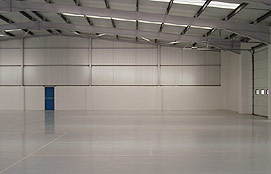


ceramics (including bricks and masonry).As well as being brought up-to-date with current usage and performance standards, each section now also contains an extra chapter on recycling.

It also now examines the contribution that material selection makes to sustainable construction practice, considering the availability of raw materials, production, recycling and reuse, which all contribute to the life cycle assessment of structures. This new edition has been expanded to cover recent developments such as the use of glass as a structural material. So far in the twenty-first century, there have been many developments in our understanding of materials’ behaviour and in their technology and use. Includes a new section on the selection of materials and environmental and sustainability issues.Updated with a new section on glass and a new chapter in each section on recycling.A discussion on the more challenging design issues that may defy codifi ed doctrines, such as height limits, the selection of response modifi cation factors, and peer-review requirements, is presented to introduce engineers to this emerging technology. This approach, used for the seismic design of very tall buildings constructed in the western United States within the last few years, has set in motion new ways of doing things. The fi nal section of this chapter covers performance-based designs (PBDs) for the structural design of new buildings. This is followed by a discussion on preliminary analysis techniques such as portal and cantilever methods and an in-depth discourse on torsion analysis of open section shear walls with a particular emphasis on their warping behavior. It then deals with seismic isolation and energy dissipation techniques. It begins with a discussion on damping devices that are used to reduce the perception of building motions, including passive viscoleatic dampers, tuned mass dampers, slashing water dampers, tuned liquid column dampers, and simple and nested pendulum dampers. Typically, when we prepare a back-of-the-envelope design, the purpose is to make sure we get into the ballpark once you are in, it is easy enough to find the right row in the analysis phase, and, eventually, to find the right seat.įinally, Chapter 9 covers a wide range of topics. What is needed is the proverbial back-of-the-envelope analysis that serves as a quick means of evaluating the efficacy of a concept that would then also serve as a check of computer solutions. Such a time constraint does not allow for extensive research or for time-consuming analytical procedures. The motivation that propelled me into writing this book addresses the question frequently proposed to the designer by the architects: “Can we do this?” And, in the fl ash-track world that we live in, the time frame allowed for coming up with an answer is measured in days, and, sometimes, even in hours. Therefore, the stimulus for writing this book was to develop imaginative approaches by examples, and, where appropriate, relate these specific examples to building codes that are essential and mandatory tools of the trade. Even with the availability of immense analytical backup, imaginative thinking can and must be effectively used to apply basic concepts to complex problems. None of these structures, except for those built in the last decade, were developed using intense calculations as we know them today, but were more products of inventive imagery. Engineers are generally characterized as imaginative in their design approach as supported by historical evidence, which includes the creation of ancient structures, medieval cathedrals, and the skyscrapers of today. Imagine then the design possibilities when experiential intuition marries unfathomable precision and numerical accuracy. Therefore, the challenge I set for myself in this book was to bridge these two approaches: one that was based on intuitive skill and experience, and the other that relied on computer skills. These thoughts occur to me in my day-to-day engineering and more specifically as I was preparing this manuscript.


 0 kommentar(er)
0 kommentar(er)
